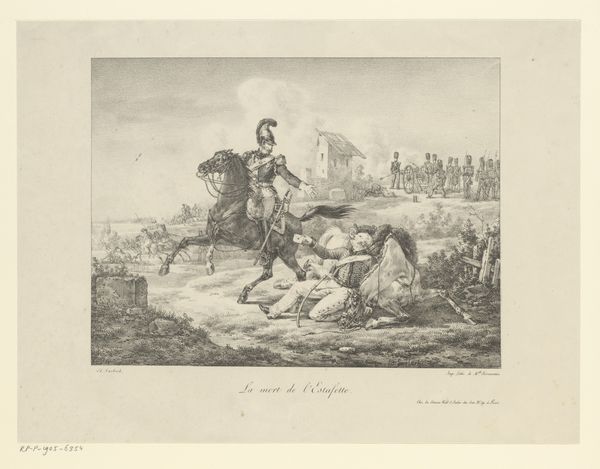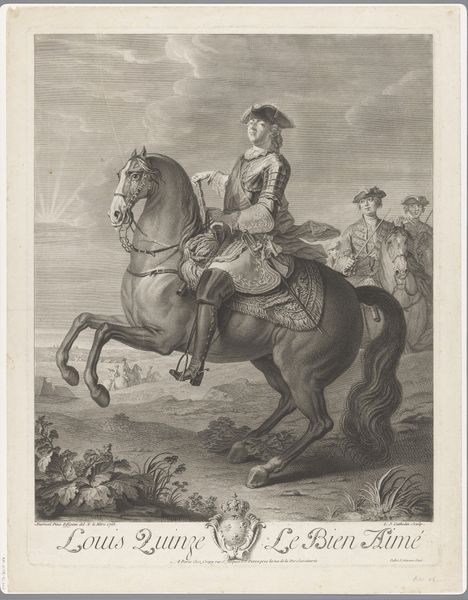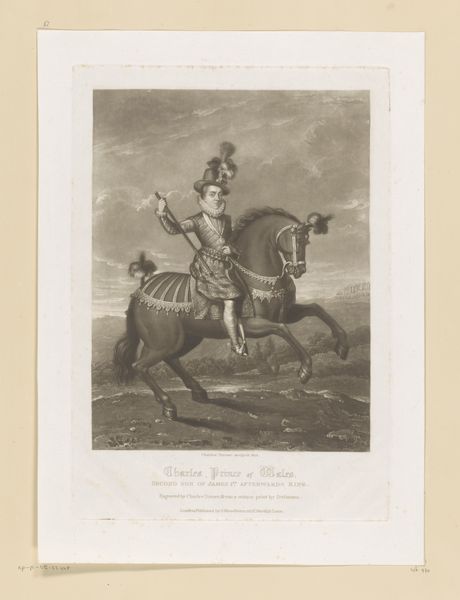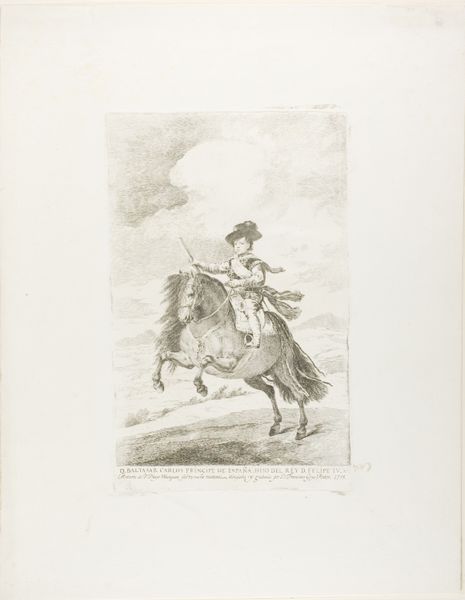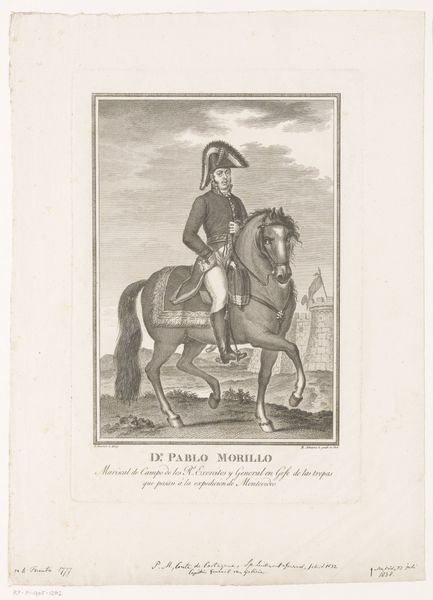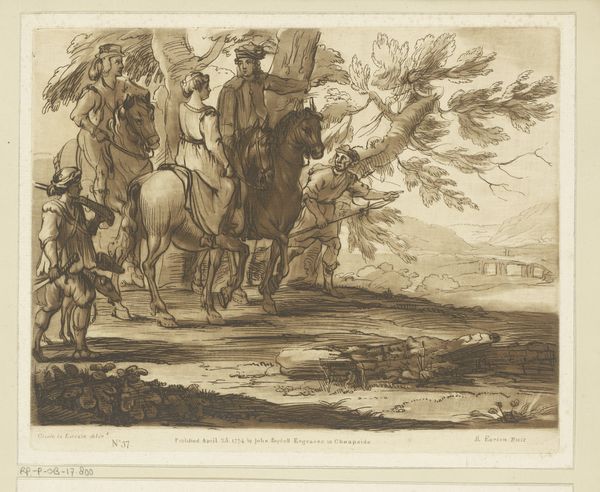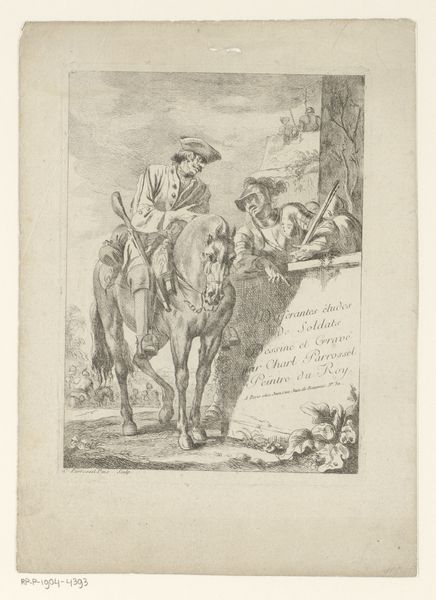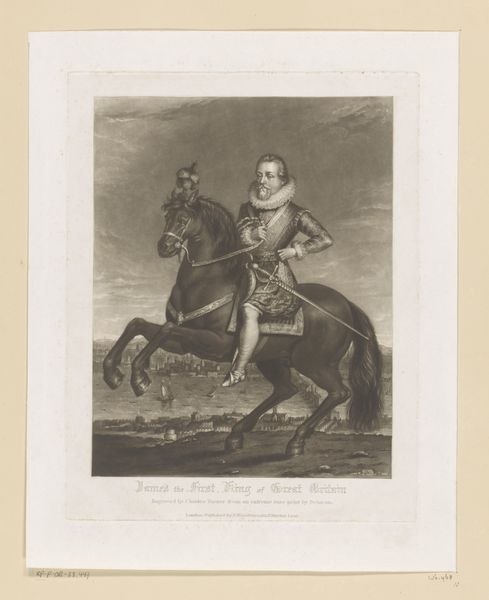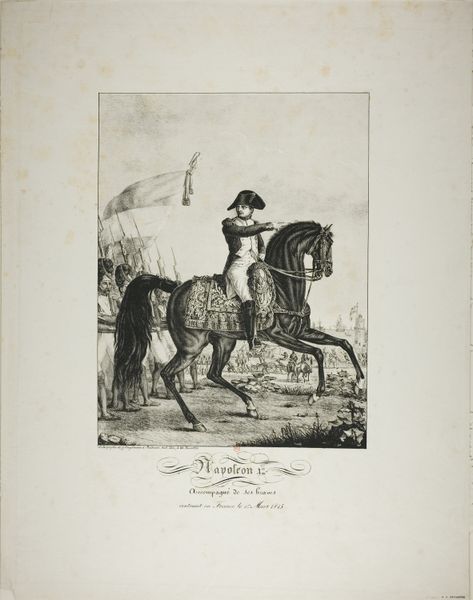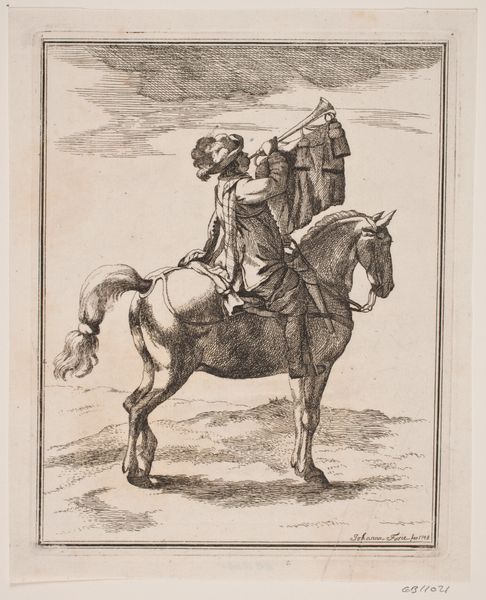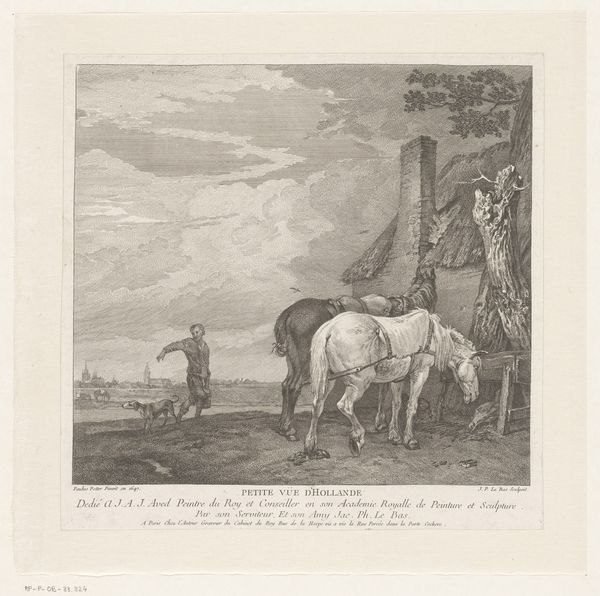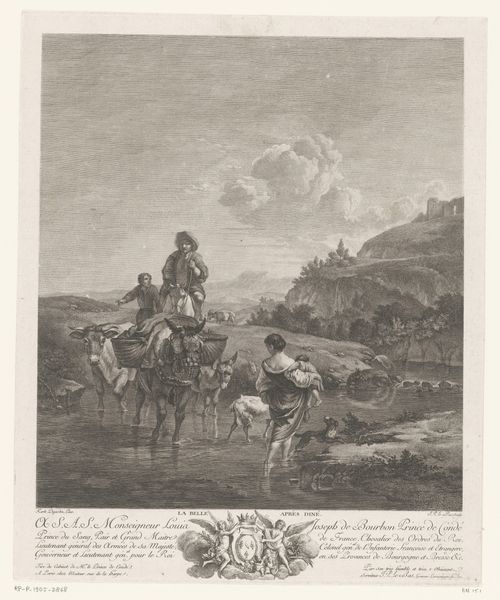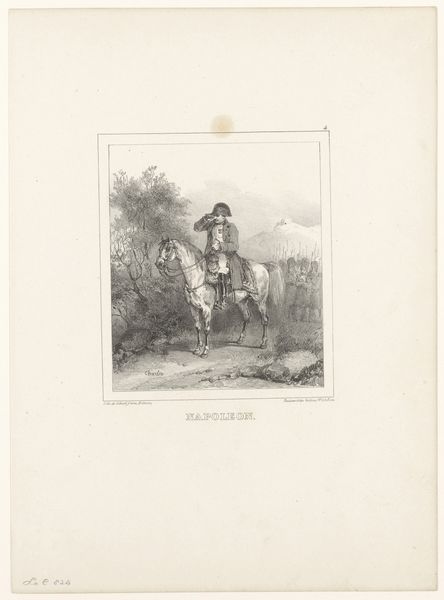
Dimensions: height 254 mm, width 181 mm
Copyright: Rijks Museum: Open Domain
Editor: This is a print titled "Equestrian Portrait of Joseph II, Holy Roman Emperor" by Johann Georg Lorenz Rugendas I, made between 1764 and 1799. It’s an engraving. The overall feel to me is very formal, almost staged, fitting for a ruler of the time. How do you interpret the role of imagery like this back then? Curator: Well, this portrait needs to be seen as more than just a depiction of Joseph II. Consider how images of rulers, especially in military settings, were deployed. It’s strategic. The print circulates this very specific image, the emperor, the horse, the battle in the back. The artist seeks to solidify his position and project power and legitimacy within his territories, or even to those beyond, what do you make of the decision to create it in print rather than a painted version? Editor: I imagine being an engraving it was more accessible and easier to disseminate to a larger audience than a unique painting would be. Curator: Precisely. This relates to the democratization of art and information through printmaking, making Joseph’s image accessible across social classes. These prints became tools to form public opinion and cement a specific narrative around Joseph II’s reign. Also, it highlights the mechanics of art within the institutional dynamics of power and influence, shaping what people believed. Editor: I never thought about art's democratic role beyond museums, like the ability for the image of the ruler to travel across empires. That perspective totally reframes how I see its function in society back then! Curator: The artwork in question and the image production in and of itself help to explain societal values. It emphasizes the function of art to promote state ideologies. Editor: Looking at art this way reveals the impact it can have on the public perception of a person of political relevance. I will reflect on these points!
Comments
No comments
Be the first to comment and join the conversation on the ultimate creative platform.
